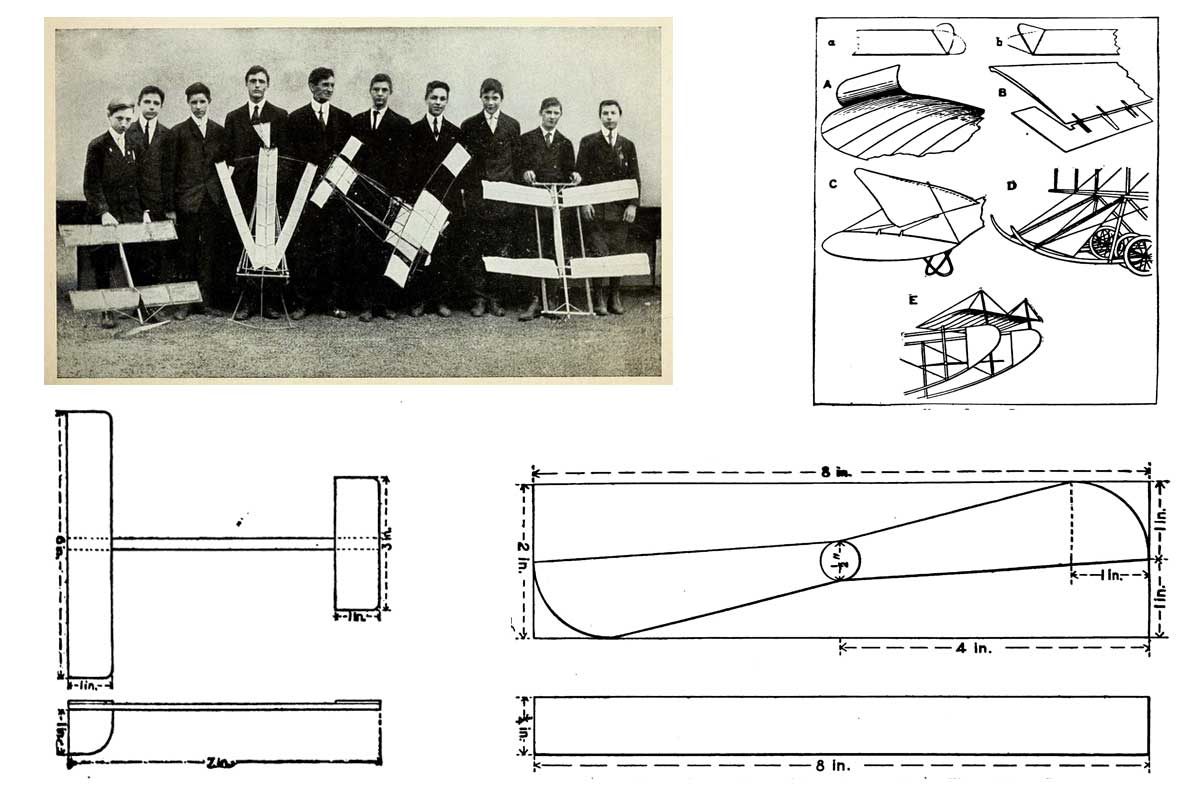
Ready for a fun summer project? The Second Boys’ Book of Model Aeorplanes will help you construct and fly model airplane gliders and motorized airplane models.
The first edition of this book covered the history of airplanes and how they fly. With the world of aircraft changing very rapidly at the time these books were written, this edition brought the subject up to date by using more modern models patterned after the Wright brothers’ plane and others:
Fascinating little paper models, reproducing the famous man-carrying machines, the Wright, Bleriot, and others, may be put together in a few minutes. With a little adjustment, they may be made to fly from fifty to one hundred times their length. A paper Bleriot biplane six inches in length, for instance, may be made to sail for from twenty-five to fifty feet, and so on. This will be the actual horizontal distance traversed; the actual distance measured in long, undulating curves may be considerably more. Such flights do not consist merely of a long diagonal to earth, but of several surprising upward sweeps, well worth the trouble of construction.
To begin, you can start with a simple glider. The model with dimensions is in the book. From there, if you read carefully you can begin to modify and improve your plane:
Begin with a very simple model. You will soon learn the trick of judging the size of the supporting surfaces and the spacing. The Antoinette aeroplane is probably the easiest one to imitate. From a sheet of ordinary writing paper, cardboard or fine wood, cut the form indicated. If the paper be rather heavy, it may be made six inches in length. By folding the paper and making one cutting, it will be found much easier to make the wings even and symmetrical.
The two sides should be fixed at a broad dihedral angle. To keep the little glider on an even keel you will need to add a weight to the front. A large pin or paper clip will answer. Launch the glider by holding it horizontally and throwing slightly forward. If it darts downward, lighten the ballast. If it falls backward, “sitting on its tail,” add more weight at the front or bend the tail up.
Your glider will, of course, travel to the ground along the line of least resistance, and the trick is to adjust the center of gravity and center of pressure that this descent may be as gradual as possible. The center of gravity should come a little in front of the center of pressure. The gliding angle, as it is called, or the angle between the course of the model in flight with the ground should be about one in twelve. In other words, the glider descends one foot for every twelve feet it travels forward. Practically all the famous monoplanes may be reproduced in this way.
As you continue through the book, you will learn how to create the following structures (among others):
- Slingshot glider.
- Aluminum model.
- Geared model.
- Propeller model.
- Planes with skids.
- Planes with motors.
- One-ounce models.
- Three-ounce model.
- Model using an adjustable stabilizer.
And of course, you will be learning the basics of flight along the way, such as:
- Materials that work and why.
- How to get a longer flight.
- What steering devices to use.
- Longitudinal stability.
For those not familiar with aeronautical terms, you’ll find a helpful glossary in the back.
It may be helpful to read the first book first (see below) to learn about the history of flight and understand how planes work.
Have fun!
Free eBook
Additional Resources
The Second Boys’ Book of Model Aeroplanes
Reliable paperback version for those interested.
The Boys’ Book of Model Aeroplanes
First edition in the public domain.
Flight Adventures Unit Study ~ Free
Great go-along!










You must be logged in to post a comment.